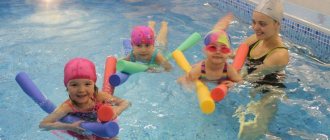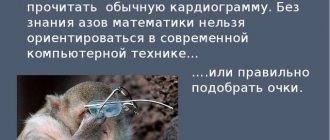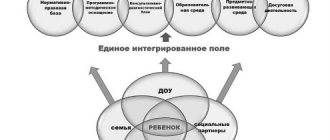System of health work in preschool educational institutions
there are rooms for physical education and music classes, with the necessary equipment;
there are gymnastic benches, sports mats, gymnastic walls, inclined boards, ribbed boards;
stairs for stepping and developing balance, rubber mats, massage mats for the prevention of flat feet, dry pool;
foot massagers, balls, hoops, sandbags, ropes;
skittles, fitballs, hanging targets, soft modules and other necessary equipment. All this allows you to include a large group of children in the work, which ensures high motor density of classes;
there is a touch track, cones for marking;
the sports ground for outdoor exercise is equipped with the necessary equipment, a gymnastic wall and a balance beam;
there is a card index of outdoor games with the necessary hats and other attributes;
there is a large card index for the development of basic types of movement, a card index of physical education minutes and finger games;
in each age group there are physical education corners where children study both independently and under the supervision of teachers;
children of the senior, preparatory groups visit the swimming pool and gym of the children's clinic;
there is a speech therapist's office (logopunkt) for individual correctional work;
a medical office equipped with the following equipment: scales, height meter, spirometer, children’s hand dynamometer, inhaler, bactericidal air irradiator-circulator, plantograph, “Dolphin”, “Solnyshko” devices
The educational process of the preschool educational institution is based on the program “From childhood to adolescence” edited by T.N. Doronova The programs “Fundamentals of the safety of preschool children” by R.B. Sterkina, O.L. Knyazeva, N.N. Avdeeva, “How to raise a healthy child” by V.G. are used. Alyamovskaya.
Having analyzed the program “From Childhood to Adolescence” (section “Physical Education”), the team of teachers came to the conclusion that it does not sufficiently fulfill the children’s need for movement. During the day, the number of movements physiologically necessary for the child is not performed, physical exercises do not solve the problem of training the cardiovascular system, the thermoregulatory apparatus, and therefore do not provide the desired effect in promoting health.
To develop an effective action plan, a system of health-improving work in the preschool educational institution was drawn up, which became a tool for orientation and integration of the efforts of the entire team towards future desired results.
2.2. Children's health monitoring
When organizing health monitoring
children, the medical worker collects information about the child upon admission to kindergarten through a questionnaire, study of documentation and personal conversation.
An important condition for working in this direction is the diagnostic work of a doctor, head nurse, physical education instructor, and educators. They determine the initial functional indicators of the child’s health and the level of his physical fitness. The obtained primary results are a reference for predicting the characteristics of a child’s development, selecting the optimal content of education and upbringing, taking into account the individual characteristics of each child. All this data is recorded in the child's individual card .
After a thorough study of the child’s individual development map, living conditions, behavioral and developmental characteristics, the doctor draws up
a group health passport
(according to E. Borisova), which provides recommendations to educators on how to improve the health of each child individually. Based on group passports, an annual plan for treatment and preventive procedures in preschool educational institutions is drawn up.
MAGAZINE Preschooler.RF
Organization of physical education and health activities with preschool childrenAuthor: Sviridova Victoria Gennadievna
Abstract: the article reveals the construction of an educational space for the harmonious physical development of preschool children, the formation of interest and value-based attitude towards educational activities, the formation of the foundations of a healthy lifestyle.
“Taking care of health is the most important job of a teacher. Their spiritual life, worldview, mental development, strength of knowledge, and self-confidence depend on the cheerfulness and vigor of children.” V. A. Sukhomlinsky.
Preschool age is decisive in the formation of the foundation of children's health. At the present stage of development of society, the task of educating healthy, harmoniously developed people with high mental and physical performance is being posed in a new way. To successfully solve this problem, it is important, as they say, to “take care of your health from a young age .
Preschool institutions provide opportunities to improve children's health. Throughout the entire period of a child’s stay in kindergarten, his health is protected, his body is strengthened, his level of performance and resistance to various diseases are increased.
Children are preschoolers by nature and very active. Their natural desire for development is manifested in countless movements. Being a biological need of a person, movements serve as a prerequisite for the formation of all systems and functions of the body, enriching them with new sensations, concepts, and ideas.
Teaching children the correct movements is not only necessary, but also necessary. Therefore, one of the main tasks is the proper organization of children’s physical education. Reasonable physical education is the basis for the overall development of a child, as it contributes to his normal growth, strengthening of health and formation of the psyche.
The formation of physical qualities, motor skills and abilities is closely connected with the intellectual and mental development of the child, with the development of moral and volitional personality traits.
The main objectives of physical education:
- protection and promotion of child health, hardening of the body
- achieving full physical development: harmonious physique, according to age, developed functions and adaptive abilities of the body, physical and mental performance
- education of moral and volitional personality traits, activity, independence
- creating conditions for appropriate physical activity of children
- formation of vital types of motor actions: walking, running, jumping, crawling and climbing, throwing, catching and throwing; movements of the arms, legs, torso, head; constructions and reconstructions
- formation of a wide range of game actions
- development of physical (motor) qualities: agility (including coordination abilities), general endurance, speed and strength qualities, as well as the ability to maintain balance
- promoting correct posture and preventing flat feet
- formation of accessible ideas and knowledge about the benefits of physical exercise and games, about basic hygiene requirements and rules
- nurturing interest in active motor activity and the need for it.
To solve these problems, the kindergarten must have all the conditions to ensure a sufficient level of physical activity during exercise and walking: a sports ground on the territory of the kindergarten, various sports equipment, including those made by hand, group sports centers, sports equipment.
All this contributes to the assimilation of the age-specific program, helps to make ECD useful and interesting, provides an optimal amount of physical activity and a high level of physical activity.
The organizational forms of working with children in physical education in kindergarten are:
- educational activities
- physical education and health work during the day
- leisure
- independent motor activity of children
- working with family.
The main type of OA are game situations. In order to develop and maintain children’s interest, it is necessary to use different forms of GCD:
- classical (according to the scheme: introductory-preparatory part, main, final parts)
- gaming (using games: folk outdoor games, relay games, attraction games, etc.)
- training type (walking, running, drills, sports games, climbing exercises, acrobatic elements, ball exercises, etc.)
- plot and complex (united with a certain plot, hiking, orienteering, with speech development, with quizzes, etc.)
- rhythmic gymnastics (consisting of dance movements)
- ECD from the series “Studying your body” (talks about your body, learning self-massage, instilling basic skills in self-care and first aid)
- thematic (with one type of physical exercise)
- control tests (identifying delays in the development of a child’s motor skills and ways to eliminate them).
Physical education and health work includes: morning exercises, outdoor games and physical exercises on walks (morning and evening), a physical education minute.
Through morning exercises, very special tasks are solved, namely: “wake up” the child’s body, set it up in an effective way, diversify but moderately influence the muscular system, activate the activity of the cardiac, respiratory and other body systems, stimulate the work of internal organs and sensory organs, promote the formation of correct posture, good gait, and prevent the occurrence of flat feet.
Morning exercises are also valuable because children develop the habit and need to do physical exercise every day in the morning. In addition, it provides an organized start to the day in kindergarten and makes it possible to switch the pupils’ attention to joint forms of activity.
Outdoor games and physical exercises during walks are carried out both with all children and with small subgroups. It is important that during the day each child takes part in an outdoor game organized by the teacher.
However, in no case should one equate outdoor games and physical exercise with GCD. Their main difference is that the games are played in a more relaxed manner and their duration is shorter. Here, the interests of children are more widely taken into account, and a variety of types and forms of games is provided. Walking games can be organized at different times of the year. If the whole group will participate in the game, it is more advisable to play it at the beginning of the walk. The teacher organizes games with small groups of children and individual ones throughout the walk.
The purpose of physical exercises (to develop speed of movement; to develop dexterity; to develop strength and endurance) should arouse children’s interest in independently searching for various movements, and teach them basic control of their movements. Let the kids just play, and exercises in movements turn into a motor fairy tale, fun fun, casual interesting action with an adult, a peer, or with everyone together.
Physical education minutes (physical education minutes) are carried out on GCD with mental load. They relieve fatigue and activate children's thinking, increasing mental performance.
Physical education sessions can be carried out in the form of general developmental exercises, outdoor games, didactic games with movement, dance movements, performing movements to the text of poems, as well as in the form of any motor action and task, but depending on the type of game situations and program tasks.
Active recreation for preschoolers consists of physical education leisure, physical education holidays and Health Days. All these activities help improve motor skills in children, develop their interest and need for physical exercise, and promote physical education among the population.
Planning of physical education leisure and holidays is carried out taking into account the level of general physical development of children in this group and their motor capabilities.
Teachers plan the event in advance, select games and exercises that correspond to the time of year and the theme so that all students can take an active part in them. Some games and exercises involve all the children, while others involve small groups. It is important to create a general joyful mood so that the children remember the holiday for a long time.
Independent motor activity of preschoolers occurs under the supervision of a teacher. The content and duration of physical exercises and games are determined by the children themselves. The nature of these games depends on the individual data, preparedness, capabilities and interests of the children.
When organizing the physical activity of children, it is important to remember the physiological capabilities and physical health of each child. It is the individual approach that should be most fully and widely used by educators to organize the independent motor activity of children. Playground equipment must be located in such a way that it is accessible to children.
One of the means of increasing motor activity in children’s independent activities is motor improvisation to music. Rhythmic movements, stamping, spinning to the beat of music give the child emotional pleasure. Therefore, we must strive to have music played more often in a preschool institution during children’s leisure time and independent play.
The children's life regimen, as a form of physical education and health work, includes Health Day. It is recommended to conduct it at least once a quarter.
On this day, the pupils' daily routine is filled with active physical activity, independent games, sports competitions, and musical entertainment. In the warm season, children's whole life is taken out into the open air. During the cold season, the stay of preschoolers outdoors is extended if possible.
To carry out successful physical education and health work, the kindergarten must work closely with parents. Effective forms of organizing physical education and health work with parents are:
- joint holding of physical education activities, holidays, health days, competitions
- open days, where parents have the opportunity to attend morning exercises, educational activities, and routine moments
- consultations, conversations, recommendations for parents
- parent meetings, round tables
- demonstration of advanced family education: interviews, exhibitions, meetings with parents, conferences.
It’s good to have a library on physical education for the family in a kindergarten or group: stories, poems on physical education for family reading. Meaningful thematic folders, catchy and memorable materials in parent corners are also important in physical education propaganda. The main thing is that they are not imposed, but arouse interest with their novelty, presented without cliches, edifications or moralizing.
The positive effect of physical culture and health work is possible only if its organization is gradual, systematic and comprehensive.
LIST OF SOURCES AND LITERATURE
- Alyamovskaya, V. G. Prevention of psycho-emotional stress in children by means of physical education. V. G. Alyamovskaya. - Moscow: VLADOS, 2006. - 168 p.
- Bogina, T.L. Protecting the health of children in preschool institutions. Methodical manual / T.L. Goddess. – Moscow: Mosaic – Synthesis, 2005. – 112 p.
- Zaitsev, A.A. Physical education of preschool children: Textbook. allowance / A.A. Zaitsev, E.V. Koneeva, N.K. Poleshchuk and others - Kaliningrad: Kaliningr. univ., 2007. - 71 p.
- Health-saving technologies of education in kindergarten. Ed. T.S. Yakovleva. – Moscow: School press, 2006. – 233 p.
- Zimonina, V.A. Raising a preschool child. Growing up healthy / V.A. Zimonina - Moscow: VLADOS, 2003. - 304 p.
- Makhaneva, M. Healthy child: Recommendations for work in kindergarten and primary school / M. Makhaneva. - Moscow: ARKTI, 2004. - 263 p.
- Morgunova, O.N. Physical education and health work in preschool educational institutions / O.N. Morgunova. – Voronezh: IKMA, 2005 – 127 p.
- Ovchinnikova, T.S. Motor game training for preschoolers / T.S. Ovchinnikova. - St. Petersburg: Peter, 2002. – 176 p.
- Protecting the health of children in preschool institutions / Comp. T.L. Goddess. – Moscow: Mosaic-synthesis, 2006. – 165 p.
- Stepanenkova, E.Ya. Outdoor games as a consequence of the harmonious development of preschoolers / E.Ya. Stepanenkova // Preschool education. – 2005. – No. 12. – P.23–25.
- Chupakha, I.V. Health-saving technologies in the educational process / I.V. Chupakha. – Moscow: Education, 2003 – 143 p.
- Shebeko, V.N. Formation of personal physical culture of preschool children in various types of activities / V.N. Shebeko // Current problems and trends in modern preschool education: collection of articles. scientific Art. / edit. N.S. Starzhinskaya et al.; under general ed. L.N. Voronetskoy, T.V. Pozdeeva. – Minsk: BSPU, 2008. – pp. 243–245
- Shiryaeva, I. Hardening of children / I. Shiryaeva // Child in kindergarten - 2001. - No. 6. - P.26-27.
- Physical education and development of preschool children / Ed. S.O. Filippova. - Moscow: Childhood, 2007. - 322 p.
| Next > |



